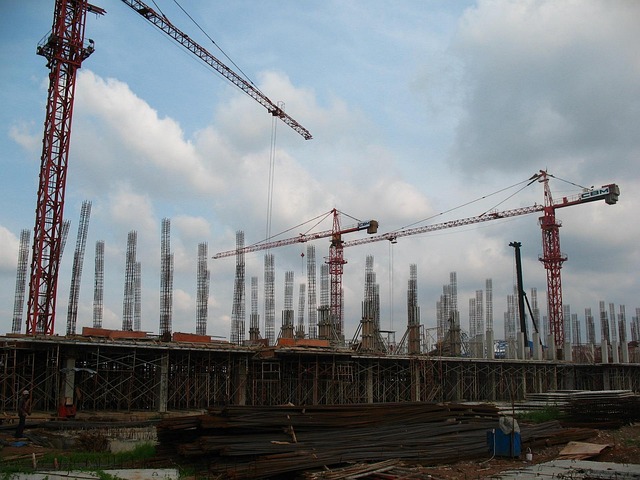Basement wall cracks due to settlement, shifting soil, or humidity require immediate attention from Foundation Contractors. Regular inspections are crucial for early detection of issues like tilting and moisture. Contractors offer tailored stabilization methods, from cost-effective patches to intensive anchor systems, addressing soil settlement, structural damage, and water intrusion. Modern non-invasive techniques realign walls without disruption, while advanced methods like wall anchors and helical piles ensure long-term stability against soil shifts and pressure.
Basement walls, often overlooked, can signal deeper structural issues. Understanding crack patterns and causes is key to basement wall stabilization. This comprehensive guide delves into the world of foundation health, highlighting the crucial role of professional foundation contractors. We explore various methods, from non-invasive techniques to long-term solutions, empowering homeowners to navigate basement instability effectively. By addressing these concerns promptly, property owners can ensure a secure and stable living environment.
Understanding Basement Wall Cracks

Basement wall cracks can be both an aesthetic and structural concern for homeowners. These cracks often develop due to various factors, such as settling of the foundation, shifting soil, or changes in humidity levels. Foundation contractors highlight that identifying the cause is crucial before implementing any stabilization measures.
While some cracks might be mere cosmetic issues, others could indicate more severe problems, especially if they widen over time. Regular inspections are recommended to ensure early detection. Addressing basement wall cracks promptly not only improves the overall appearance of your home but also prevents potential damage caused by water infiltration and further structural instability.
The Role of Foundation Contractors

Foundation contractors play a pivotal role in basement wall stabilization, addressing structural integrity issues that may arise over time. Their expertise lies in assessing and correcting any cracks or misalignments in foundation walls, which can be caused by soil movement, settlement, or other geological factors. Through advanced techniques and materials, these professionals ensure the long-term stability and safety of basements, preventing further damage and maintaining the structural integrity of the entire building.
When it comes to basement wall stabilization projects, Foundation Contractors employ various strategies tailored to specific needs. This may include repairing or replacing faulty components, installing mechanical anchors, or applying specialized coatings to reinforce the walls. By drawing on their extensive knowledge and experience, they guide homeowners through the process, ensuring compliance with local building codes and offering solutions that are both effective and cost-efficient.
Evaluating Basement Wall Stabilization Methods

When considering basement wall stabilization, it’s crucial to evaluate various methods available. The first step involves assessing the specific issues affecting your basement walls, such as cracks, tilting, or moisture problems. Foundation contractors often recommend different techniques depending on these factors. For instance, carbon fiber sheets or epoxy injections can effectively seal and strengthen small cracks, while larger structural repairs might require more intensive solutions like wall anchors or beam systems.
Evaluating these methods involves understanding their benefits and limitations. Carbon fiber and epoxy treatments are cost-effective and non-invasive but may not address deeper issues. In contrast, wall anchors provide long-term stability by securely fastening walls to adjacent structures, ideal for severe tilting or shifting. Foundation contractors can guide you in selecting the most suitable method based on your unique circumstances, ensuring lasting results and protecting your basement’s structural integrity.
Common Causes of Basement Wall Instability

Basement walls can become unstable due to a variety of factors, often related to the integrity of the foundation. One of the primary causes is settlement or shifting of the soil beneath the house. This movement can be a result of improper compaction during construction, changes in water levels, or heavy loads on the soil, such as from nearby excavations. Over time, this settling can cause cracks and unevenness in basement walls.
Another common issue is structural damage to the foundation itself. Cracks in concrete or masonry can lead to water intrusion and further weaken the wall. Water infiltration weakens the structure and accelerates corrosion of steel reinforcing bars, which can compromise the overall stability of the basement walls. Foundation contractors often address these problems by implementing specialized stabilization techniques, such as wall anchors, helical piles, or structural jacking, depending on the severity of the issue.
Non-Invasive Stabilization Techniques

Basement wall stabilization doesn’t always require invasive methods. Modern, non-invasive techniques offer effective solutions for those looking to reinforce their basement walls without causing significant disruption. Foundation contractors often employ advanced technologies such as hydraulic jacks and anchor systems to gently realign and secure misaligned walls.
These innovative approaches are particularly beneficial for older homes where traditional renovation might be costly or disruptive. By minimizing excavation and structural interference, non-invasive stabilization techniques preserve the existing basement layout while enhancing structural integrity. This not only saves on reconstruction costs but also ensures the longevity of the basement space for years to come.
Long-Term Solutions for Robust Walls

When it comes to basement wall stabilization, long-term solutions are paramount for ensuring robust and safe walls. Foundation contractors offer advanced techniques such as wall anchors and helical piles that provide permanent fixes. Wall anchors involve installing metal bolts into the earth behind the wall, providing a strong connection that prevents further movement or cracking. Helical piles, on the other hand, are screw-like devices driven deep into the soil, offering an effective solution for unstable soil conditions.
These methods not only stabilize existing walls but also enhance their structural integrity, protecting against potential damage from shifting soils and hydrostatic pressure. By investing in these long-term solutions, homeowners can rest assured that their basement walls will remain secure and sound for years to come, eliminating the need for costly repairs or replacements down the line.
